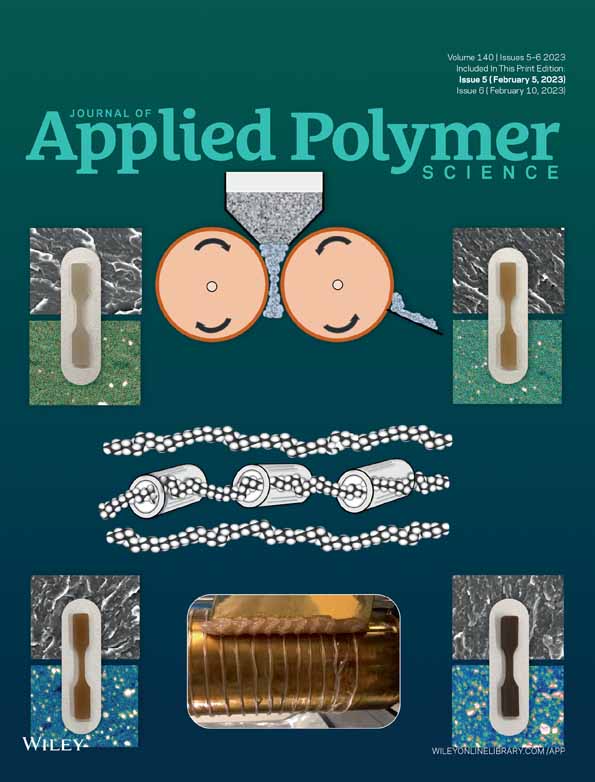Fabrication of flexible carbon dioxide gas sensor with conductive polymer/reduced graphene oxide hybrids: Effects of substrate type and mass ratio
Funding information: Ministry of Higher Education Malaysia, Grant/Award Number: FRGS/1/2020/TK0/UCSI/03/3
Abstract
Flexible gas sensors made of polyaniline (PANI)-reduced graphene oxide (rGO) nanocomposite were prepared using three different substrates, namely filter paper, cotton fabric, and weighing paper, through in-situ reduction of GO and in-situ polymerization of aniline. Preliminary analysis showed that the PANI/rGO coated on filter paper possesses a superior electrical conductance than PANI/rGO coated on cotton fabric and weighing paper. Such observation was attributed to the good attachment of the PANI/rGO nanocomposites onto the high-density mesh-like structure of the filter paper with rough surfaces. In contrast, PANI/rGO coated onto weighing paper and cotton fabric of different surface structures presented lower-to-almost negligible conductance. Accordingly, PANI/rGO filter paper was selected for the subsequent evaluation of gas sensing properties. The gas-sensing performances of the PANI/rGO filter paper sensors indicated that the 5 wt% PANI/rGO (i.e., 5 wt% rGO) sample exhibited the best response of 306% for 500 ppm carbon dioxide (CO2) gas at room temperature with a recovery rate of 41.5%. On the other hand, the optimum recovery rate of 59.5% was identified at 0.5 wt% PANI/rGO sample which exhibited a response of 155%. Owing to the synergy effect, the PANI/rGO sensor outperformed the sensor made of pure PANI or pure rGO.
CONFLICT OF INTEREST
The authors declare no competing financial interest.
Open Research
DATA AVAILABILITY STATEMENT
The data that support the findings of this study are available from the corresponding author upon reasonable request.




